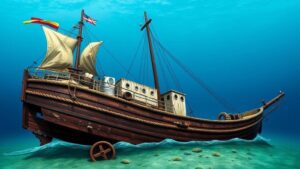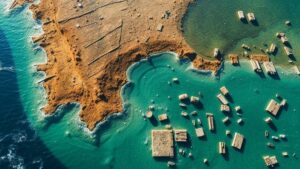Using Maritime Logs in NOAA’s Databases for Artifact Recovery Efforts
Using Maritime Logs in NOAA’s Databases for Artifact Recovery Efforts
The National Oceanic and Atmospheric Administration (NOAA) manages a vast collection of maritime logs that serve as critical resources for artifact recovery efforts. These logs, which document a range of maritime activities, provide valuable insights into historical events and maritime practices, aiding researchers and archaeologists in locating and recovering marine artifacts.
The Role of NOAA in Maritime Archaeology
NOAA plays a pivotal role in maritime archaeology through its stewardship of marine resources and historical data. Established in 1970, NOAA’s Office of Ocean Exploration and Research promotes the exploration and mapping of underwater cultural heritage. Part of this effort involves maintaining databases that house logs and records from various maritime activities.
Maritime logs document ship voyages, cargo manifests, weather conditions, and navigational routes. Researchers utilize these logs to trace historical shipping patterns, identify shipwreck locations, and uncover significant artifacts. NOAAs databases are particularly robust, with thousands of records spanning centuries, reflecting the maritime history of the United States.
Historical Context of Maritime Logs
Maritime logs can be traced back to ancient civilizations, including the Greeks and Romans, who documented their naval expeditions. But, formalized logging practices gained prominence during the Age of Exploration (15th to 17th centuries), when European nations expanded their naval capabilities. By the early 20th century, standardized logging procedures were adopted, leading to systematic data collection.
According to NOAA, the National Marine Sanctuaries System currently protects approximately 600 historic shipwrecks that are relevant to American maritime history. The logs related to these vessels contain critical information about navigational mishaps, cargoes lost at sea, and the socio-political context of the time. An example is the sinking of the USS Monitor in 1862 during the Civil War, where logs provided insights into the vessel’s last movements.
Data Utilization in Artifact Recovery
Artifact recovery efforts rely heavily on the accurate interpretation of maritime logs. By integrating log data with modern technology such as Geographic Information Systems (GIS), researchers can create detailed maps that highlight potential locations of submerged artifacts.
For example, the integration of NOAA’s shipwreck databases with recent geological surveys has led to successful recoveries of artifacts from notable wrecks. Leveraging advanced sonar technology, archaeologists can visualize underwater topography and pinpoint locations previously mentioned in logs.
Case Studies of Successful Recoveries
Several successful artifact recovery efforts demonstrate how maritime logs facilitate the process:
- The Wreck of the Titanic: Although primarily studied through other means, related maritime logs provided historical context about its last voyage, enhancing the understanding of ship design flaws and contributing to the recovery of artifacts during expeditions.
- The Atocha Recovery: The famed Spanish galleon, sunk in 1622 off Floridas coast, saw logs utilized to derive probable recovery zones. Artifacts recovered include gold, silver, and personal effects, valued at over $400 million.
- The Whydah Gally: Captured in 1716, the Whydah is significant as it was the first authenticated pirate shipwreck in North America. Logs aided researchers in locating the shipwreck site in the sands of Cape Cod, leading to discoveries of coins and artifacts that narrate pirate history.
Challenges in Utilizing Maritime Logs
Despite the benefits, utilizing maritime logs presents certain challenges:
- Data Gaps: Many logs were lost or damaged due to the passage of time or environmental conditions, leading to incomplete records.
- Interpretation Ambiguities: Entries can often be vague or inconsistent, making it difficult to draw definitive conclusions in some cases.
- Technological Limitations: While technology has advanced, limitations still exist regarding the ability to access and interpret extensive data from diverse log formats.
Conclusion
Maritime logs in NOAA’s databases represent a critical component in the field of maritime archaeology and artifact recovery. As the synergy between traditional historical data and modern technological applications continues to evolve, the potential for new discoveries remains significant. By leveraging these comprehensive records effectively, researchers can enhance our understanding of maritime history, recover important artifacts, and preserve cultural heritage for future generations.
Ultimately, further investment in data preservation and accessibility will be paramount, facilitating ongoing investigations into the mysteries of the deep and ensuring that invaluable insights into our maritime past are not lost to history.



